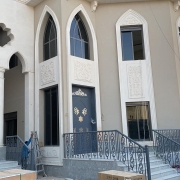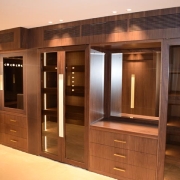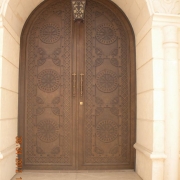Today, there is a growing global trend toward sustainability and environmental protection, especially in the fields of construction and design. Doors and windows are fundamental elements of any building, which makes the use of eco-friendly materials in their design highly important.Arak shadow is committed to providing modern solutions that combine quality, efficiency, and environmental responsibility. In this article, we will explore the importance of using eco-friendly materials in modern door and window design, highlighting their benefits and different types.
1. What Are Eco-Friendly Materials?
Eco-friendly materials are those produced in ways that minimize environmental impact, whether in raw material extraction, manufacturing processes, or usage. These materials are often recyclable, durable, and help reduce energy consumption.
Examples of eco-friendly materials include:
- Recycled Aluminum
- Sustainable Wood
- Low-E (Low Emissivity) Glass
- Eco-Friendly Composite Materials
2. The Importance of Using Eco-Friendly Materials in Door and Window Design
A. Reducing the Carbon Footprint
Using eco-friendly materials helps reduce the building’s carbon footprint by relying on manufacturing techniques that minimize CO₂ emissions.
B. Energy Efficiency
Designing doors and windows with effective thermal insulation materials reduces the need for heating or cooling, cutting energy consumption and improving occupant comfort.
C. Promoting Sustainability
Recyclable materials help minimize waste and reduce dependence on non-renewable natural resources.
D. Health and Quality of Life
Eco-friendly materials reduce harmful emissions and chemicals, improving indoor air quality and promoting occupant health.
3. Types of Eco-Friendly Materials in Door and Window Design
A. Recycled Aluminum
- Advantages:
- Lightweight and durable.
- Easy to shape and manufacture.
- 100% recyclable without quality loss.
- Uses:
Ideal for designing door and window frames that combine elegance and strength.
B. Sustainable Wood
- Advantages:
- Natural aesthetic appeal.
- Sourced from sustainably managed forests.
- Biodegradable and recyclable.
- Uses:
Used for designing doors and windows where a natural, warm look is desired.
C. Low-E (Low Emissivity) Glass
- Advantages:
- Reduces heat loss in winter.
- Reflects external heat in summer.
- Improves building energy efficiency.
- Uses:
Applied in window designs for effective thermal insulation and reduced energy consumption.
D. Eco-Friendly Composite Materials
- Advantages:
- Combine properties of different materials for high performance.
- Resistant to corrosion and weather conditions.
- Long lifespan.
- Uses:
Suitable for designing doors and windows requiring specific features such as strength and thermal insulation.
4. Benefits of Using Eco-Friendly Materials
A. Lower Long-Term Costs
Although eco-friendly materials may have higher initial costs, they save money in the long run by reducing energy consumption and maintenance needs.
B. Compliance with Environmental Standards
Companies using these materials comply with environmental regulations, enhancing their market reputation.
C. Improving Building Market Value
Buildings that use eco-friendly materials are more valuable due to the growing demand for sustainable properties.
D. Supporting Innovation and Technological Development
Using these materials encourages companies to innovate and develop new technologies to improve performance and sustainability.
5. Challenges of Using Eco-Friendly Materials
Despite their many benefits, using eco-friendly materials comes with challenges:
- High Initial Costs: Some eco-friendly materials are more expensive than traditional options.
- Limited Availability: Finding suppliers for these materials can be difficult in some markets.
- Need for Awareness: Educating clients and engineers about the benefits and effective use of these materials is essential.
6. The Role of Technology in Promoting Eco-Friendly Materials
Modern technology has made it easier to produce and use eco-friendly materials through:
- 3D Printing: Allows precise manufacturing of door and window components while reducing waste.
- Smart Energy Management Systems: Enhance energy efficiency by utilizing advanced insulating materials.
- Advanced Software: Used to design simulation models that optimize the use of eco-friendly materials.
Conclusion
Using eco-friendly materials in modern door and window design is a critical step toward achieving sustainability in construction and design. These materials offer numerous benefits, including energy efficiency, improved health, and environmental responsibility. By adopting these materials, companies like Arak shadow can balance high performance with environmental preservation.












Leave a Reply
Want to join the discussion?Feel free to contribute!